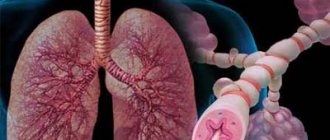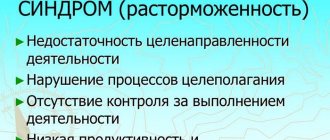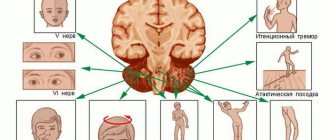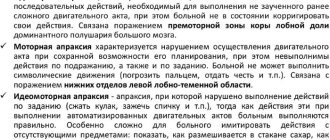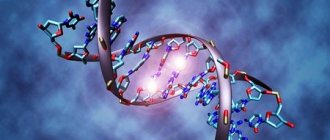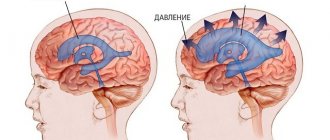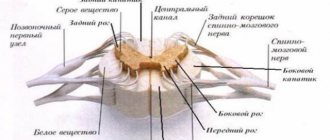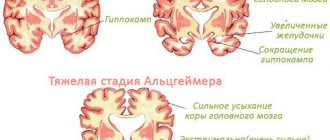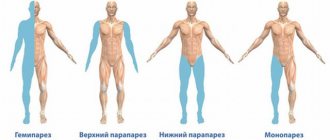How does the disease manifest itself?
Symptoms of chorea in children have been known for a long time. Chorea in children is manifested by intense obsessive motor passages, which cannot be controlled. It is noteworthy that when a person sleeps, the symptoms disappear.
Etiological factor
Chorea in children manifests itself in a variety of ways. Symptoms of chorea in children are classified as follows:
- Chorea in cerebral palsy (the anomaly manifests itself in early preschool age).
- Konovalov-Wilson syndrome.
- Sydenham's disease.
- Huntington's disease.
In the first case, chorea in children manifests itself mainly in facial expressions. Obsessive motor passages are present, but in a small amplitude. In the second case, there is a hereditary anomaly, which is characterized by an excess of copper in the nervous tissue, cornea and liver. Choreic hyperkinesis is characterized by its sweep.
Sydenham's disease is a rheumatoid abnormality. It often develops after streptococcal sore throat. In this case, chorea in children manifests itself more aggressively: the sick child makes faces and sticks out his tongue uncontrollably.
In the old days, Huntington's disease was called St. Vitus's dance, since the sweeping motor passages in this case are very similar to dance steps. This form of anomaly most often develops between the ages of twenty and twenty-five.
Huntington's disease is almost never seen in children.
Classification of pathology
Chorea in children is classified as follows:
- acute;
- subacute;
- chronic.
The primary cause of the acute stage is stroke or intoxication. Also, symptoms of chorea in children can be caused by an overdose of antihistamine drugs. Sometimes the disease is provoked by hemorrhage in the area of the basal ganglia of the brain.
The subacute form of the pathological process is characterized by the presence of emotional instability. There is also a decrease in muscle tone.
Often this form of the disease develops against the background of lupus or a breast tumor.
But the chronic form of the disease is almost never found today.
Causes
The development of rheumatism is always caused by a disease provoked by group A streptococcus:
- scarlet fever;
- infectious inflammation of the pharynx and throat - sore throat, pharyngitis, tonsillitis.
However, even against the background of infection with this pathological microorganism, the disease does not always develop and is provoked by the influence of the following predisposing causes:
- frequent infectious or other diseases that cause a malfunction of the immune system;
- long-term carriage of group A beta-hemolytic streptococcus;
- hereditary predisposition.
A secondary factor contributing to the progression of rheumatism may be:
- poor nutrition;
- hypothermia;
- frequent stressful situations or physical fatigue;
- type 1 diabetes mellitus.
All these external causes that negatively affect the state of immunity contribute to the frequent incidence of infections and a strengthening of the immune response to the invasion of group A streptococcus.
Make a diagnosis
In order to clarify the preliminary diagnosis, the doctor refers the patient for a comprehensive examination.
First, the patient's blood is taken for analysis. Based on the results, it can be determined whether the leukocytes are normal or whether there is some increase (decrease) in their level. Also, through a blood test, it is possible to determine whether a streptococcal infection is present in the body of a sick child.
Also, thanks to this analysis, it is possible to establish the rheumatoid factor in the development of the anomaly.
If the doctor suspects the development of Huntington's chorea, then an anamnesis is first collected. The specialist carefully studies the medical history of the mother and father of the sick teenager. This is necessary in order to find out whether an aggravated genetic factor is the root cause. Chorea in children, as well as in adults, is also diagnosed using MRI, CT and electroencephalogram.
Diagnostics
The diagnosis of chorea is made by a neurologist after an in-depth examination. To solve the question of how to determine chorea, it is necessary to perform a number of procedures:
- Collect a detailed medical history - information about when and under what circumstances obsessive movements appeared, what provokes them, in what situations they decrease, what medications the patient took or is taking, what illnesses he had during the month before the onset of the disease and in childhood, whether there were similar manifestations with relatives.
- Conduct a neurological examination - assess the nature of the movements (possibly choreiform obsessive movements are combined with other types), examine the patient’s neurological status, muscle tone, and the presence of concomitant intellectual and emotional disorders.
- Examine the blood for inflammatory changes (to exclude vasculitis and ataxia-telangiectasia) and increased copper concentration (to exclude Konovalov-Wilson disease).
- Perform instrumental studies - an electroencephalogram, which will help identify foci of pathological activity that cause hyperkinesis, and, if necessary, CT or MRI to exclude neoplasms.
Helping a sick person
Correct treatment of chorea in children can be prescribed only after the root cause has been established.
So, if Huntington's disease is diagnosed, the patient is prescribed tranquilizers and antipsychotics. These medications help reduce the intensity of obsessive motor passages.
Unfortunately, due to the fact that the root cause of this form of anomaly is a genetic factor, complete recovery is impossible.
In this case, systematic therapy is prescribed, with the help of which the severity of hyperkinesis is significantly reduced.
When chorea in children is provoked by taking medications, the doctor must stop the dangerous drugs. If this is not possible, it is necessary to reduce the dosage.
In the presence of vasculitis, the specialist prescribes hormonal drugs to the patient - corticosteroids. They should be taken only in accordance with the doctor's recommendations.
If the disease was caused by excess copper, the doctor will prescribe medications that bind this element in the body.
In some cases, the doctor makes a decision regarding surgical intervention.
The operation is relevant only when other means do not bring the desired result. Surgery involves division of the basal ganglia. This method of treatment is practiced extremely rarely.
As a method of auxiliary therapy, patients are prescribed nootropics, B vitamins and neurotrophic drugs.
Treatment
Antirheumatic therapy is carried out according to generally accepted clinical recommendations and protocols.
In the acute stage of rheumatic carditis, the child is recommended to be hospitalized with bed rest, the duration of which depends on the severity of the disease and can be one month or more. For other forms of rheumatism, it is enough to follow a gentle regimen.
In addition to restrictions on physical activity, it is recommended to include eggs, foods rich in vitamins C and P, fermented milk drinks and cottage cheese, fruits and vegetables in the diet. Reducing the manifestations of an allergic reaction is achieved by limiting simple carbohydrates, and to reduce the load on the cardiovascular system, limiting the consumption of protein foods can be prescribed.
Following a diet speeds up recovery and reduces pain in the joints and heart
To eliminate the main cause - streptococcal infection - penicillin antibiotics are prescribed for injection. The duration of their administration is 10–14 days. After this, long-acting penicillins are prescribed.
To reduce the inflammatory reaction and improve the general condition, treatment is supplemented by taking non-steroidal anti-inflammatory drugs in combination with a glucocorticosteroid drug. After achieving the desired result, the dosage of the corticosteroid is gradually reduced until completely discontinued. If rheumatism has a protracted course, then quinoline drugs are added to the drug therapy plan.
Clinical recommendations are supplemented by taking vitamin-mineral complexes and immunosuppressants. These remedies help normalize the immune system. Potassium supplements are used to maintain heart function.
After stopping the acute stage of rheumatism, restorative therapy is prescribed in a specialized sanatorium complex. At this stage the following are appointed:
- general strengthening physiotherapy: physical therapy, massage, therapeutic mud applications;
- rehabilitation of foci of chronic infection: timely elimination and prevention of caries, tonsillitis, adenoids, etc.
After completing the rehabilitation course, all patients with rheumatism are recommended to undergo clinical observation by a cardiologist-rheumatologist, dentist and otolaryngologist. At this stage of the fight against the disease, preventive examinations and courses of taking antibiotics and vitamin-mineral complexes are carried out.
Thanks to the development of modern medicine, rheumatism in children has become much less likely to lead to death due to developing heart defects. Despite this fact, timely medical and conservative prevention of this dangerous disease remains an important task for pediatricians and rheumatologists.
This disease develops due to infection with streptococcal infection and is accompanied by infectious-allergic damage to the connective tissue structures of the cardiovascular, musculoskeletal and central nervous systems, skin, eyes and other organs. Its comprehensive treatment consists of taking antibiotics, anti-inflammatory drugs, sanitation of chronic foci of infection and restorative therapy.
According to statistics, minor chorea most often occurs in children in the age group from five to fifteen years. At the same time, female children get sick much more often. The duration of the pathology occurs in the following time intervals:
- from 3 to 6 weeks;
- most often from 3 to 6 months;
- extremely rarely for years.
The disease also develops in the adult population, usually between the ages of thirty and forty-five years. Under the negative influence of the disease, mental disorders occur (even irreversible).
Finally
Chorea in children is an aggressive, but by no means incurable disease. The prognosis is often favorable. Most likely, the child will need long-term therapy, during which it is important to provide him with decent care.
If the disease is not based on a genetic factor, absolute recovery is not far off.
Rate this article:
(votes: 1 , average: 5.00 out of 5)
Loading...
Related posts:
- Symptoms, development factors, main methods of diagnosis and treatment of chorea minor
- The main symptoms and factors that provoke the progression of Huntington's chorea
- Rheumatic chorea: symptoms and basic methods of treating this disease
Symptoms of minor chorea
Initial signs of pathology are observed after two or three weeks after contracting tonsillitis or tonsillitis. There are situations in which rheumatic chorea develops without prior infection of the upper respiratory canals. This happens when a streptococcal infection enters the body undetected. The main symptom of the disease is a problem with motor activity.
The main symptoms of the disease are:
- negative changes in handwriting and difficulties when drawing;
- frequent changes in facial grimace (similar to antics and pampering);
- restlessness, impatience for a considerable time;
- uncontrolled pronunciation of sounds;
- speech dysfunction;
- increased fatigue;
- unstable mental and emotional state, irritability;
- hyperkinesis in various forms of manifestation (hyperkinesis of the tongue, muscle tissue of the larynx, diaphragm, arms and legs);
- observation of a weakened state of the muscular structure of the shoulders;
- the child’s inability to stick out and hold his tongue with his eyes closed;
- absent-mindedness, problems concentrating, memory impairment;
- mental disorders that are accompanied by hallucinations from auditory or visual activity;
- sleep disturbance.
